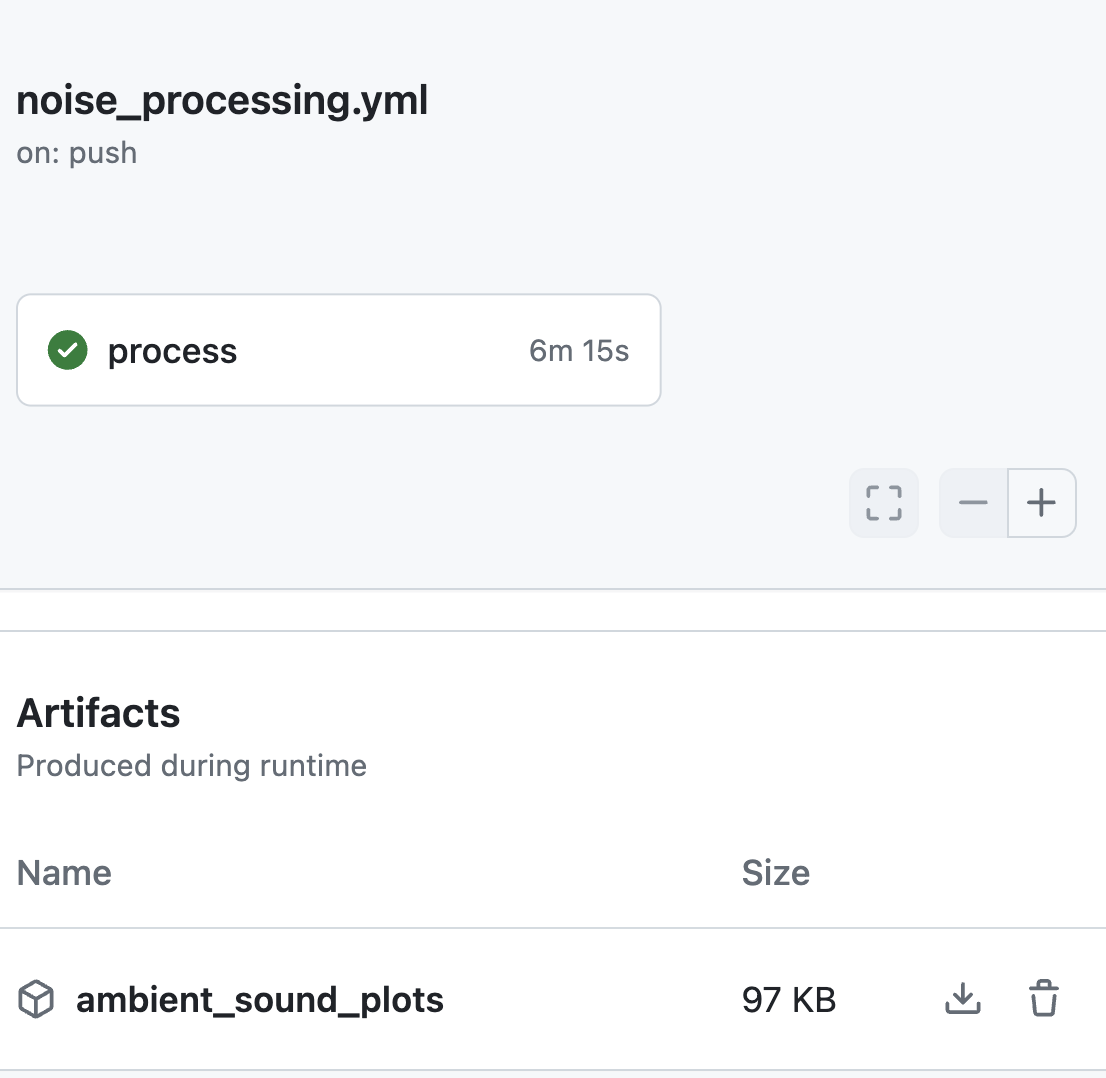Exporting Results#
We will discuss several different ways to export results.
Uploading to the GitHub Repository#
One of the easiest ways to display results is to store them in the GitHub repository. This can be a quick solution, for example, to display a small plot or a table within the Readme.md of the repository and update it as the workflow is rerun. This is not a practical solution for big outputs as the GitHub repositories are recommended to not exceed more than 1GB, and all versions of the files will be preserved in the repository’s history (thus slowing down cloning).
It is possible to execute all steps to add, commit, and push a file to GitHub, but there is already an GitHub Auto Commit Action to achieve that.

Uploading as a GitHub Workflow Artifact#
GitHub provides an option for temporary storage of GitHub Action data as Workflow Artifacts. These are kept on the GitHub website as zipped files and can downloaded within 90 days for public repositories, or 400 days for private repositories.
There is a GitHub Action which can upload file/s as GitHub Artifacts.

The artifact can be found by clicking on the workflow run and scrolling down to a section Artifacts.

The artifact can be downloaded directly from the interface but also can be downloaded through the GitHub client.
gh run download
The workflow run also provides a publicly available link to the download artifact:
Artifact download URL: [https://github.com/uwescience/SciPy2024-GitHubActionsTutorial/actions/runs/9591972369/artifacts/1619380017](uwescience/SciPy2024-
GitHubActionsTutorial/actions/runs/9591972369/artifacts/1619380017)
There is a download-artifact action to download the artifacts and share between jobs within a workflow run (note this is limited to the individual workflow run, for downloading across runs use the other options).
Here you can find more detailed documentation on GitHub Artifacts.
Uploading to Personal Storage#
A more long-term solution is to store outputs to personal storage. This could be for example Google Drive or a Cloud Provider Object Storage such as an AWS S3 bucket. To have a write access to these storage systems one will need to provide the credential information securely to GitHub Actions. This can be achieved through storing the credential information as Action Secrets.
The write operation can be performed directly from the Python code or from the GitHub Action configuration. Here will demonstrate how to upload data to Google Drive with rclone, a tool for transferring data between storage system which is quite provide agnostic.
The approach consists of a few steps:
use an
rcloneGitHub Action to avoid installingrclonemanually
we will use AnimMouse/setup-rclone
configure a Google Drive remote locally
encode the text in the config file and save it as a secret
RCLONE_CONFIGopenssl base64 -in ~/.config/rclone/rclone_drive.conf
run the
rclonecommand to upload the plots to Google Driverclone copy ambient_sound_analysis/img/broadband.png mydrive:rclone_uploads/

